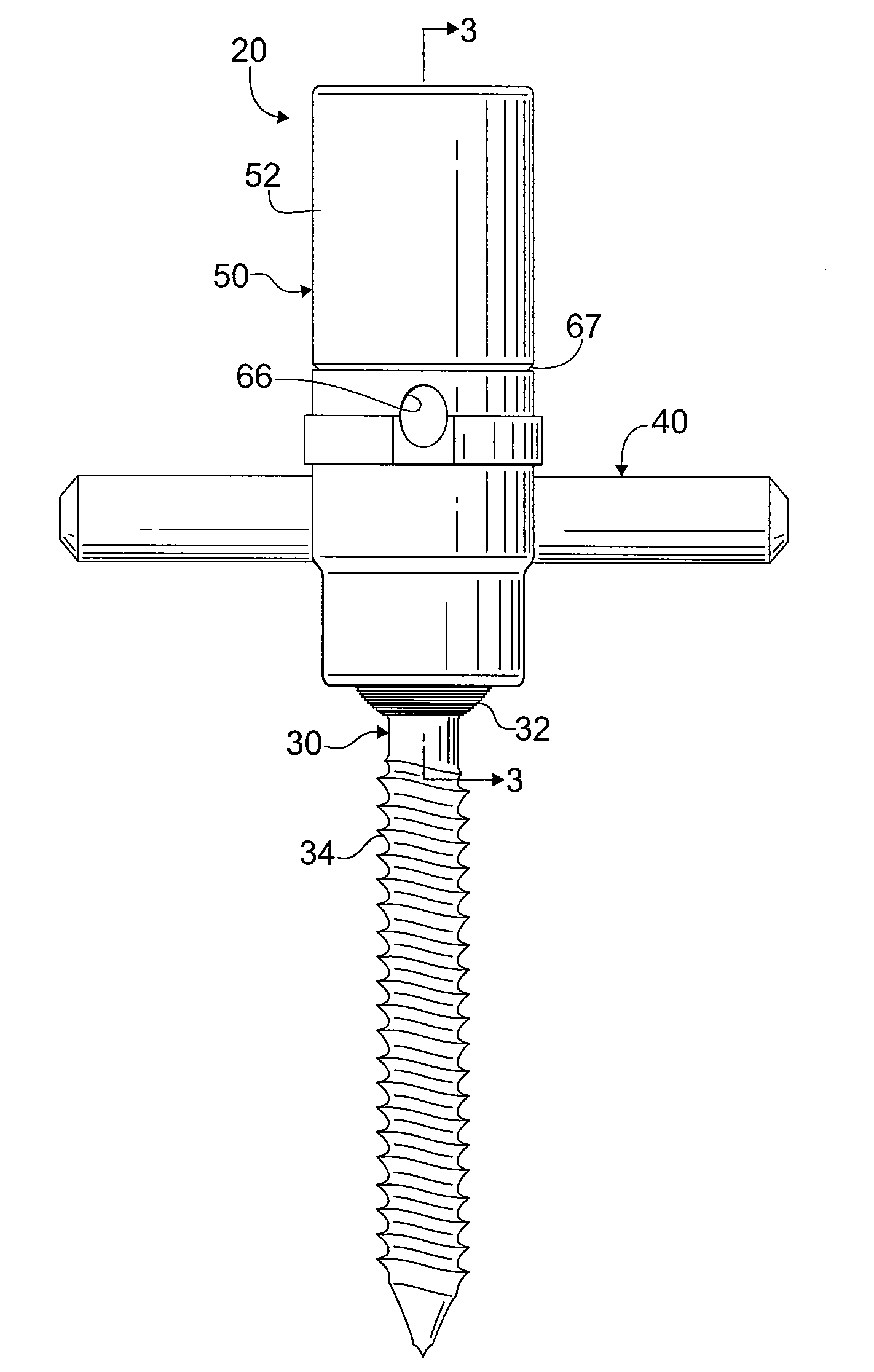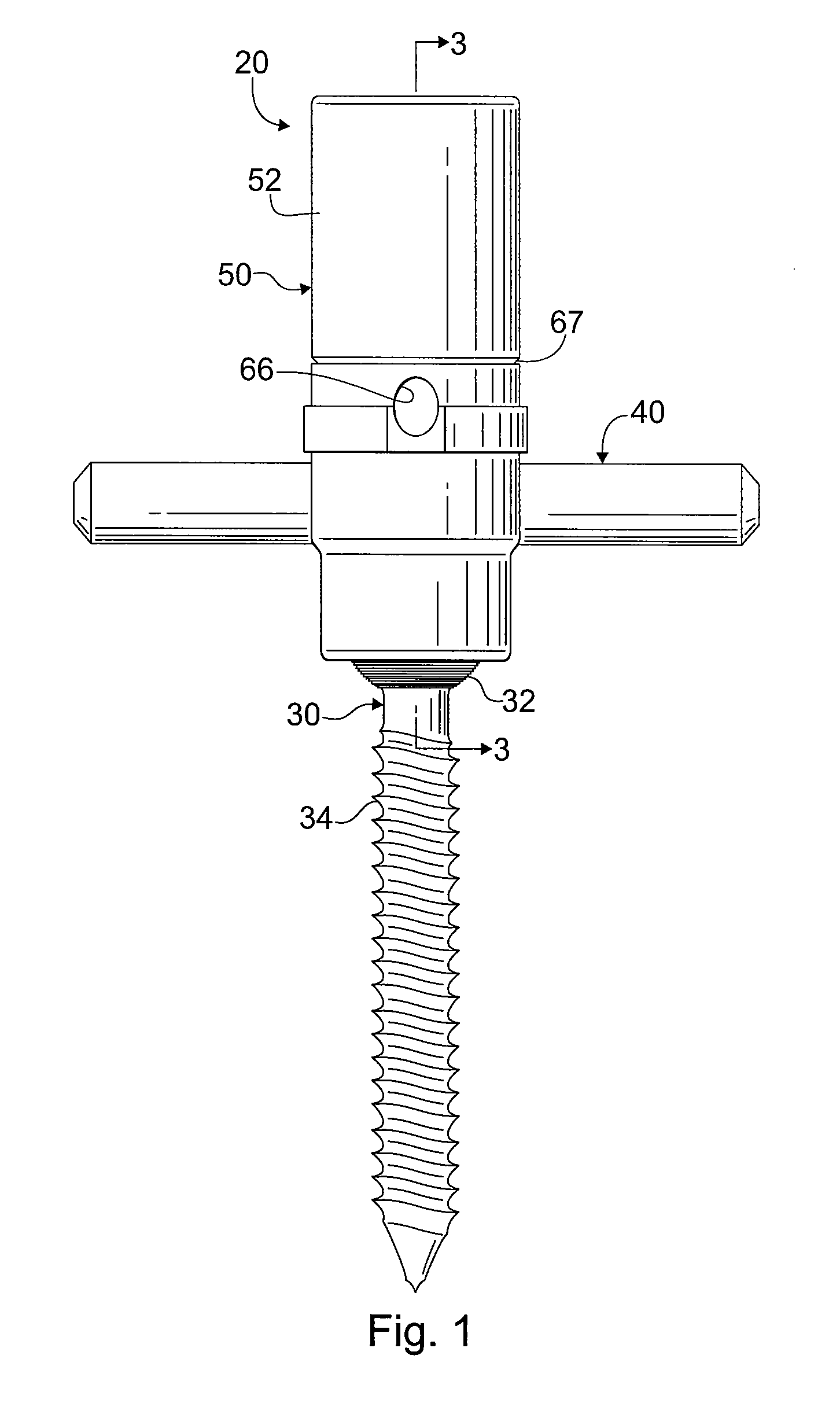Pedicle screw fixation system
a technology of fixing system and screw, which is applied in the field of spine fixing system, can solve the problems of requiring torque to tighten the locking element, rarely allowing three or more implants to be directly in line, and requiring a significant amount of torque in the final tightening
- Summary
- Abstract
- Description
- Claims
- Application Information
AI Technical Summary
Benefits of technology
Problems solved by technology
Method used
Image
Examples
Embodiment Construction
[0029]Although the invention is illustrated and described herein with reference to specific embodiments, the invention is not intended to be limited to the details shown. Rather, various modifications may be made in the details within the scope and range of equivalents of the claims and without departing from the invention.
[0030]Referring to the drawing figures generally, and to FIGS. 1 and 2 in particular, a fixation assembly 20 in accordance with an exemplary embodiment of the invention is shown. Fixation assembly 20 includes a polyaxial screw 30 and a hollow receiver component 50. Polyaxial screw 30 has a screw head 32 that is seated inside the receiver component 50, and a threaded shank 34 that projects outside the receiver component. Receiver component 50 supports a rod 40 that may be coupled to two or more polyaxial screws for stabilizing and correcting the spine at multiple levels and locations. Rod 40 is secured in receiver component 50 by a locking mechanism 70. As will be ...
PUM
 Login to View More
Login to View More Abstract
Description
Claims
Application Information
 Login to View More
Login to View More - R&D
- Intellectual Property
- Life Sciences
- Materials
- Tech Scout
- Unparalleled Data Quality
- Higher Quality Content
- 60% Fewer Hallucinations
Browse by: Latest US Patents, China's latest patents, Technical Efficacy Thesaurus, Application Domain, Technology Topic, Popular Technical Reports.
© 2025 PatSnap. All rights reserved.Legal|Privacy policy|Modern Slavery Act Transparency Statement|Sitemap|About US| Contact US: help@patsnap.com



